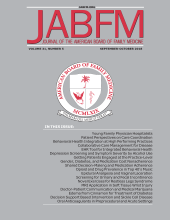Abstract
Objective: To assess the prevalence of pre-existing conditions for community health center (CHC) patients who gained insurance coverage post-Affordable Care Act (ACA).
Methods: We analyzed electronic health record data from 78,059 patients aged 19 to 64 uninsured at their last visit pre-ACA from 386 CHCs in 19 states. We compared the prevalence and types of pre-existing conditions pre-ACA (2012 to 2013) and post-ACA (2014 to 2015), by insurance status and race/ethnicity.
Results: Pre-ACA, >50% of patients in the cohort had ≥1 Pre-existing condition. Post-ACA, >70% of those who gained insurance coverage had ≥1 condition. Post-ACA, all racial/ethnic subgroups showed an increase in the number of pre-existing conditions, with non-Hispanic Black and Hispanic patients experiencing the largest increases (adjusted prevalence difference, 18.9; 95% CI, 18.2 to 19.6 and 18.3; 95% CI, 17.8 to 18.7, respectively). The most common conditions post-ACA were mental health disorders with the highest prevalence among patients who gained Medicaid (45.6%) and lowest among those who gained private coverage (30.5%).
Conclusions: This study emphasizes the high prevalence of pre-existing conditions among CHC patients and the large increase in the proportion of patients with at least 1 of these diagnoses post-ACA. Given how common these conditions are, repealing pre-existing condition protections could be extremely harmful to millions of patients and would likely exacerbate health care and health disparities.







